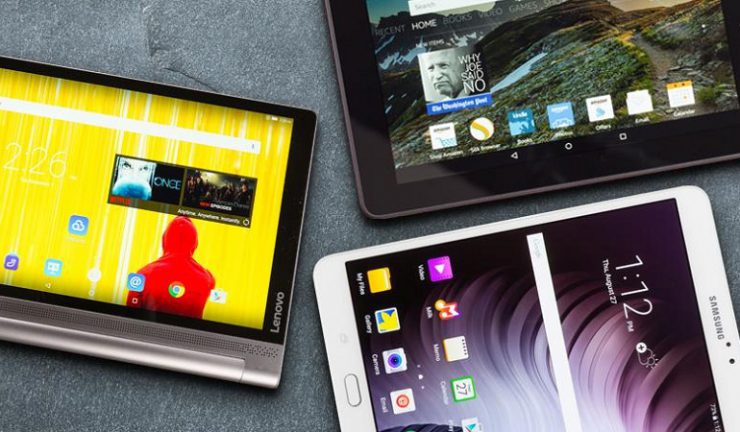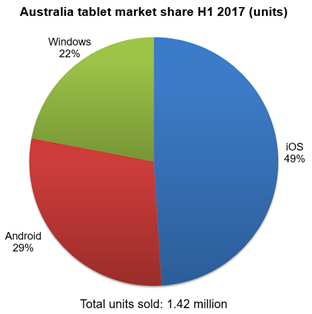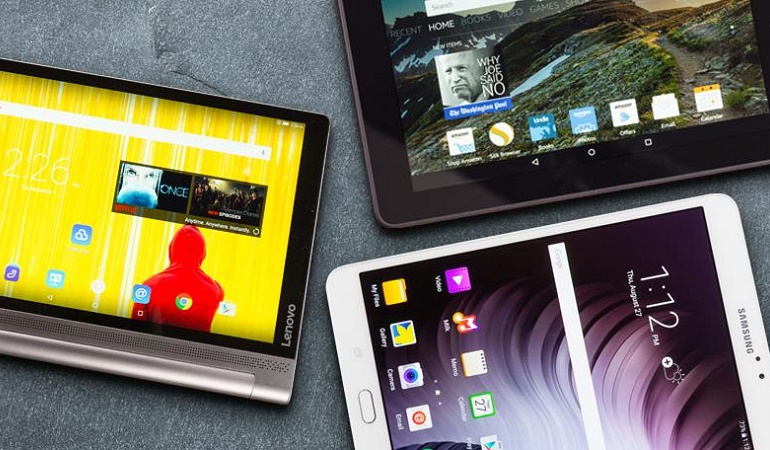Down 10% from a year ago.
Android tablet sales cooled during the first half of 2017, according to new research from analyst firm Telsyte. With 1.4 million units sold, this was a decrease of 10% from 12 months ago.
According to the Telsyte Australian Tablet Computer Market Study 2017-2021 the decline was mainly due to easing demand for Android-based tablets, but also waning Android support from manufacturers who are giving greater focus to Microsoft Windows 10-based touchscreen devices. Android tablet sales declined by 29% compared to the first half of 2016, with many manufacturers holding back the release of new Android tablets, including Google, which has not released a new Nexus or Pixel tablet in over a year.
Apple, Samsung, Microsoft and Lenovo remain the top four tablet manufacturers by sales in the first half of 2017, accounting for over 80% of total units sold and almost half of all tablets sold in Australia are Apple iPads.

The survey showed more consumers are opting for 4G/LTE capable tablets with the trend likely to continue with the availability of shared data plans, larger mobile data caps and the anticipated arrival of eSIMs in the near future. Telsyte research also showed 2-in-1 tablets, or tablets which can be also used as a computing device, with keyboard, continued to go from strength to strength with 2-in-1s accounting for a third of tablet sales in the 2017 first half. Windows-based devices from a range of manufacturers have clearly benefited from the merging of PC and tablet features, while demand for the iPad Pro has also been increasing as Apple positions its top-of-range products as an all-in-one computing device for the average computer or tablet user.
“Microsoft seems to be redeeming itself with larger touchscreens despite losing the smartphone platform battle,” Telsyte managing director, Foad Fadaghi, said.
Telsyte estimates tablet sales will pick up in the 2017 second half with around 1.7 million expected to be sold, an increase of 7% over the same period last year. A return to growth is expected to be driven by consumers replacing aging, unsupported devices or by upgrading to 2-in-1s. Sales of Windows tablets in Australia are predicted to overtake Android by the end of 2017.

Augmented Reality (AR) and aging devices will drive upgrades
Telsyte expects the release of Apple’s ARKit and Google’s ARCore will not only encourage smartphone upgrades, but also start to have positive flow-on effects to tablets sales. Telsyte believes some AR applications will benefit from a larger display for better viewing and content sharing experiences between families and friends. Consumers identified games and entertainment as the main AR apps they are interested in using on tablets.
According to Telsyte’s research, over 40% of Australian tablet users have already tried AR applications such as Pokémon Go, Layar and AR-like features found in social media photo filters. While most Australians intend to use AR mainly on their smartphones, more Australian consumers would rather use AR on tablets than on standalone AR headsets or smart glasses. It estimates that less than 10% of the current iPad user base is capable of running AR apps developed using Apple’s ARKit. Google has provided limited guidance on minimum requirements for running ARCore on Android tablets; and itis expected that low-end Android tablets will not provide an adequate AR experience, which depends on powerful CPUs and graphics processing chips.
“While AR has been around for a long time, new developer platforms and better hardware will encourage business investment in the next generation of tablet apps,” Telsyte senior analyst, Alvin Lee, said.

